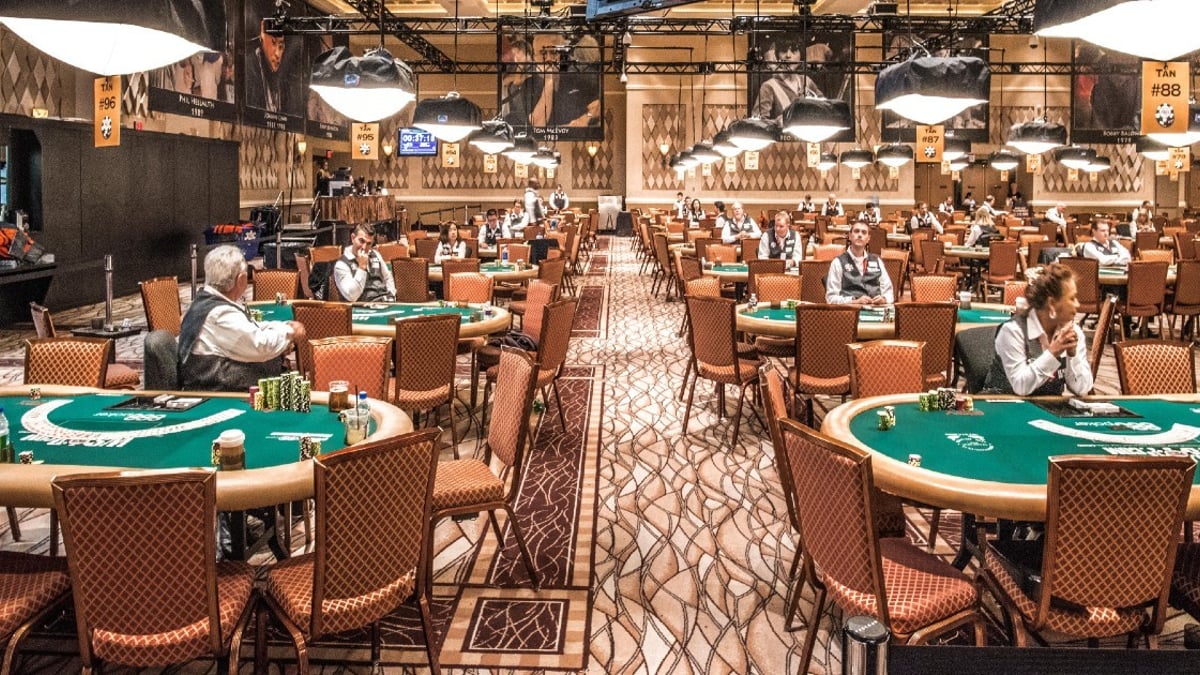Is Poker Thriving? Is Poker Dying? Let's Look at the Numbers

The poker world has been buzzing since the World Series of Poker Main Event shattered the all-time attendance record. A growing contingent now believes that poker is not just alive and well; it’s entering a new boom period.
I made an offhand comment on Twitter about the success of the World Series of Poker Main Event in an otherwise declining U.S. poker economy.
“Pretty remarkable how popular the WSOP continues to be as poker has declined in the US (online and in-person). Not even sure what numbers a legal across the US online poker economy would produce - 12,000 entries?”
Several poker media members said I was out of my mind and that live poker is thriving. This may be true using some metrics, but by the end of this column, it will be apparent that poker is not booming.
The WSOP as a Bellwether
The 2023 World Series of Poker Main Event set a new attendance record, as the most prestigious tournament in the world crossed the 10,000-player barrier for the first time. The previous record, 8,773 entrants, was set during the peak of the Poker Boom in 2006.
The 2006 event occurred before Congress passed the Unlawful Internet Gaming Enforcement Act (UIGEA) in October of that year, which was the first domino to fall in the war against online poker.
An interesting piece of trivia is that the WSOP consistently grew until a massive drop-off in 2007. Beginning with the first freeze-out tournament in 1971, the turnout for the WSOP Main Event grew in 34 out of 35 years. The only dip occurred in 1992, when 201 players entered the event, down from 215 in 1991. Whether poker was shrinking or growing, the WSOP was a consistent draw, an outlier event in the greater world of poker.
That all changed after UIGEA. Beginning with the first post-UIGEA event in 2007, attendance fell six times in nine years. However, it was still many times larger than the early boom years.
Things began to look up in the late 2010s. In 2017 attendance exceeded 7,000 for the first time since 2010. In 2018 attendance jumped to 7,874, the second-highest tally in history. The record was in jeopardy in 2019 but eventually fell short with 8,569 entries.
There were high hopes for the 2020 event, but COVID had other plans. The 2020 series took place (twice, actually), but with 1,379 entries, it’s such an outlier that it should be ignored.
⭐ 100% Deposit Match Up To $1,000 + $100 In Free Play + WSOP Main Event Seat Package ⭐
Then, 2021 was a rebound year, with 6,650 entries. In 2022, the Main Event again flirted with the record set in 2006, but again, it fell just short, with a final tally of 8,663, just ten players shy of the record.
The question for 2023 wasn’t if the record would fall but by how much. We got our answer, as 10,043 players registered for the 2023 WSOP Main Event.
The WSOP Main Event is at a high point and likely still ascendent, but there is more to poker than the WSOP, and I would argue that the Main Event is not a good metric for the overall health of poker.
But Live Tournaments are Bigger than Ever
When it comes to live tournaments, there are more events, and those events perform exceedingly well.
At the height of the Poker Boom, in 2006, the World Poker Tour Championship boasted a $25,000 buy-in and attracted 639 entries for a total prize pool of $15.5 million. The 2022 Championship had a $10,000 buy-in and attracted 2.960 players, a $29 million prize pool.
Beyond the “Main Event” numbers, the series surrounding these major tournaments have grown, too. And yes, I would say that live tournaments are thriving.
Like the WSOP, live poker tournaments are booming. But poker is more than live tournaments; outside of live events, poker (at least in the U.S.) is a shell of what it was during the original poker boom.
The Curious Case of the Disappearing Poker Room
Live poker (outside of tournaments) has been depleted throughout most of the country.
As John Mehaffey pointed out, “Since 2020, 13 Las Vegas poker rooms closed. Since 2012, it's 39, and most large rooms are smaller than they once were. Deadwood lost half its poker rooms. WV, PA, and NJ each lost two. MI lost three.”
I’ve always kept careful watch of the Nevada numbers. While the number of Nevada poker tables has increased since the pandemic, it’s still below pre-pandemic levels and well below the room and table numbers from the 1990s.
The bottom line is that fewer people are playing poker on a day-to-day basis.
The Poker Boom Was Built Different
The number of cardrooms and tables has declined, but the makeup of the games is even more worrisome. Stakes have dropped to pre-Poker Boom levels when cardrooms offered a bunch of minimum stakes tables, a few high-stakes games, and a few in between.
Poker rooms mirrored pit games during the Boom, with stakes increasing in the evening and on weekends. And virtually every game was an action game. There was a buzz in Poker Boom cardrooms that doesn’t exist in 2023, even in the busiest cardrooms.
As I said on Twitter, airdrop anyone who thinks the present day rivals the Boom years into a cardroom in 2005, and their head would explode. Another Twitter user, itsabbyyyyy responded, “You could find multiple 5-10 games, any time of day, anywhere. And even higher. Now you can’t find 2-5 24 hours a day in some places. Also, the action gets worse every year.”
⭐100% Welcome Bonus up to $1,000 + $75 Poker Bonus with BetMGM Poker ⭐
More to the point, stakes are down, and the average player is remarkably better. In the early days of the poker boom, a poker room was filled with excitement. Like a lively craps table, it was a place that drew people in. The energy was palpable.
The poker rooms I visited over the last five-plus years are the opposite. Most of the time, I’m looking for the exit as fast as possible to escape the collective depression emanating from it.
The juxtaposition is that live tournaments are booming, and live cash games are dwindling. And then there is online poker, the fuel that makes the poker machine run.
The Truth About Online Poker
Online poker is a shell of its former self thanks to UIGEA, international regulation, Black Friday, and Sheldon Adelson’s one-man campaign to thwart legalization stateside.
The great lie is that online poker cannibalizes live poker. The truth is that online poker drives people to brick & mortar cardrooms.
As much as the naysayers would have you believe otherwise, online poker was why cardrooms were full in the 2000s. There were few poker rooms during the 1990s, so accessibility was a serious issue. It was hard to learn poker when there was nowhere to play. Pre-Poker Boom was like a world without gyms. Yes, some people will lift weights at home, but those are the die-hards.
Online poker sites solved that. It allowed new players to get their feet wet for small stakes and let younger players hone their skills. The result was many online players looking for brick & mortar options. By the 2000s, there were far more poker rooms in the U.S., and during the Boom, slots were put in mothball and replaced with poker tables.
⭐ Play 1 Hand, Get $50 in Free Poker Bonus at PokerStars! ⭐
And then there were the home games spawned by online poker. Online poker had everyone and their younger cousin interested in the game, whether college kids playing for $5, $10, or $20 per person or moms and dads willing to put up $100 every few weeks at a local bar. In the mid-2000s, every basement, bar, and social club had a poker game.
For most, online poker was like going to the driving range to hit a bucket of balls. It was fun and helped people learn the game. It was also unique at the time, as there weren’t many time sinks on the internet in the early and mid-2000s. People drawn to online poker during the Boom have a lot more options to choose from.
All that said, what online poker really did was whet the casual player’s appetite for the real thing. There cannot be a poker boom until online poker returns to the U.S. beyond a handful of states. And unfortunately, the current situation with solvers and bots may be a death blow for online poker. Casual players aren’t going to be interested in the modern online poker scene.














